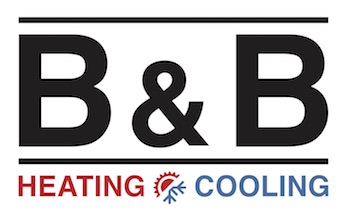
Ceiling fans are one of the most underrated ways to enhance comfort and cut energy costs. By improving air circulation and assisting your HVAC system, ceiling fans and energy efficiency are truly a match made in heaven. They offer a practical, energy-efficient way to keep cool while reducing strain on your AC—even preventing unnecessary air conditioning repair.
In this blog, the experts at B & B Heating & Cooling explain how ceiling fans can keep you cool while avoiding energy waste with increased HVAC efficiency. We'll also provide some HVAC efficiency tips that take advantage of ceiling fans.
Comfort vs. Temperature: The Effect of the Wind-Chill Effect Indoors
Ceiling fans don’t actually change the room’s temperature—they make you feel cooler by blowing air across your skin. This is called the wind-chill effect, and it can make a room feel up to 4 degrees cooler without adjusting the thermostat. That means you stay comfortable and enjoy the benefits of indoor air circulation from your ceiling fan while relying less on your air conditioner—helping reduce your electric bill in summer.
The Best of Both: Why You Should Use Fans and Air Conditioning Together
There are several upsides to using ceiling fans and air conditioning together, especially during the warmer months. By combining both, you maximize HVAC efficiency and maintain a comfortable indoor temperature with less effort from your cooling system.
Top perks of using ceiling fans and AC together:
- Ceiling fans help lower HVAC load by circulating cool air more evenly around a room. Reducing HVAC stress is important, because it can save you from a breakdown that could lead to premature AC or furnace installation.
- Using overhead fans improves your indoor comfort by eliminating hot spots and enhancing circulation.
- Running both ceiling fans and AC can reduce overall energy use. If you have a home automation system, you can even adjust your smart thermostat settings to bump up the temp a few degrees while your ceiling fan is running.
Clockwise vs. Counterclockwise Ceiling Fan Rotation: Which Direction Should a Fan Spin?
To maximize the benefits of your ceiling fans year-round, it’s important to set the blades to rotate in the right direction for the season. The direction influences how air moves, which can either or push warm air downward so you feel warmer.
When it's best to spin ceiling fans counterclockwise
When it's hot outside, ceiling fans should spin counterclockwise at a quick speed. This creates a breeze that forces cool air down, increasing the wind-chill effect and creating a cooler sensation.
When to rotate ceiling fans clockwise
When it's cold out, set your fan to turn clockwise on a slower speed. This softly moves cold air up and draws warm air downward from the ceiling, so you feel warmer without changing your thermostat.
Things to Look for in a Ceiling Fan
Choosing the right ceiling fan depends on a few key factors, including blade design, airflow rating and room dimensions. First, look for fans that have a good blend of ECFM airflow and blade pitch to ensure efficient air movement in your space:
- ECFM refers to how much air a fan circulates—the cubic feet per minute, or CFM—per watt of electricity consumed. Fans with greater ECFM are more energy efficient.
- Blade pitch is the angle of the blades. A steeper blade pitch moves more air but can also strain the motor.
Also, consider room size when sizing a ceiling fan—a fan that’s too small won’t circulate sufficient air, while one that’s too large may be disruptive in a smaller room.
Boost Your HVAC Efficiency With the Experts from B & B Heating & Cooling
At B & B Heating & Cooling, our HVAC specialists can help you maintain a cozy home while minimizing wear on your heating and cooling systems. From efficient ceiling fan strategies and air conditioning installation to smart thermostats and furnace repair, we offer comprehensive solutions that fit your lifestyle. Reserve your appointment by calling 314-668-8530 today.
